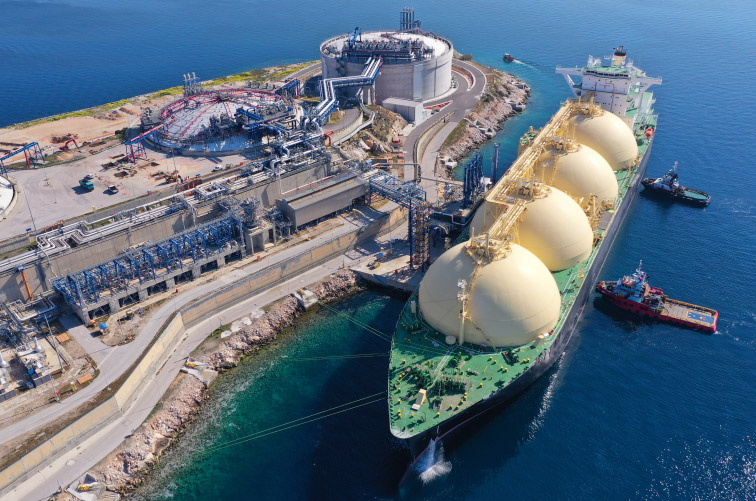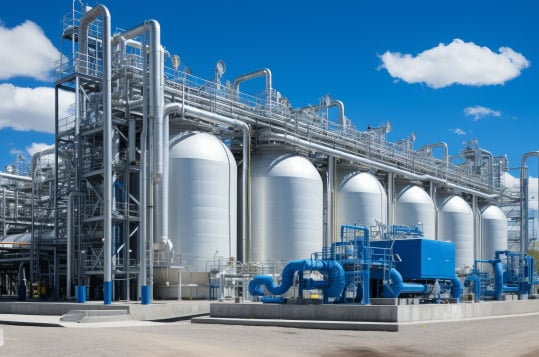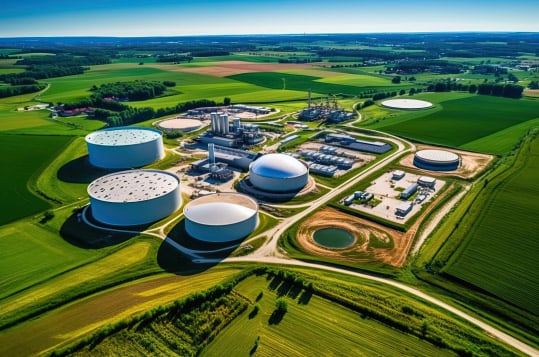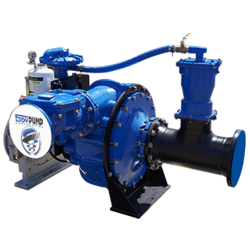Application of EDDY Pump in Natural Gas Production



Application of Our Slurry Pumps in Natural Gas Production

- Drilling Fluid Management: Heavy-duty slurry pump is essential for circulating drilling fluids, also known as mud, during the drilling process. They help maintain pressure and remove cuttings from the drilling area, ensuring smooth drilling operations and preventing damage to the drilling equipment.
- Solids Removal: A high solids pump removes solids and debris from natural gas wells, including sand, silt, and other particulates that can accumulate during production. Efficient solids removal prevents clogging, equipment wear, and production inefficiencies.
- Fracking Operations: In hydraulic fracturing (fracking), a slurry transport pump injects fracturing fluids containing proppants into rock formations. These pumps ensure the precise delivery of fluids under high pressure, creating fractures that allow natural gas to flow more freely.
- Pipeline Cleaning and Maintenance: Slurry transport pumps are utilized to clean and maintain pipelines by transporting cleaning solutions and removing accumulated scale, corrosion, and sediments. This helps maintain pipeline integrity and optimizes gas flow.
- Liquefied Natural Gas (LNG) Processing: Slurry pumps play a role in LNG processing, assisting with the transfer of LNG between storage tanks and conveying liquefied natural gas during loading and unloading operations.
- Wastewater Management: A high-solids pump handles wastewater generated during natural gas production. They assist in transferring, treating, and disposing of produced water, which often contains solids and contaminants that must be appropriately managed.
- Sand Separation: A sand slurry pump is employed in sand separation units, which help separate sand and other particulates from the produced fluids before further processing or transportation.
- Cavern Storage: Heavy-duty slurry pump creates and maintains underground natural gas storage caverns. These pumps facilitate the injection and withdrawal of natural gas from these storage facilities.
- Sediment Control: A high solids pump controls sediment buildup in holding ponds and settling basins, preventing environmental contamination and ensuring compliance with regulatory standards.
- Flue Gas Desulfurization: In natural gas power generation, flue gas desulfurization involves a slurry transport pump for transporting and injecting sorbents to remove sulfur dioxide emissions from the flue gases.
CALL FOR SALES OR SUPPORT
If you need help with Pump Selection, Sales or Engineering Support
Call 619-345-5446

Application of EDDY Pump’s Hydraulic Dredging in Natural Gas Production

- Pipeline Installation and Maintenance: The dredge pump system creates trenches and clear pathways for installing underwater pipelines. This ensures safe and efficient natural gas transportation from offshore wells to onshore processing facilities. Dredging also maintains clearances around existing pipelines, preventing sediment accumulation and potential blockages.
- Dredging for Platform Installation: Before installing offshore platforms or drilling rigs, a hydraulic dredger is often employed to prepare the seabed by removing sediment and creating a stable foundation for the structures.
- Navigational Channel Maintenance: Canal dredging equipment helps maintain navigational channels and access routes for supply vessels, support ships, and other marine traffic involved in natural gas production operations. Clear channels are essential for safe and efficient transportation of personnel, equipment, and supplies.
- Slurry Transport for Hydraulic Fracturing: In hydraulic fracturing operations, hydraulic dredging may transport fracturing fluids, proppants, and other materials required for the fracturing process. Dredges can create slurry mixtures that are pumped down wellbores to facilitate fracturing.
- Environmental Mitigation and Restoration: A dredging machine can remove contaminated sediments or restore natural habitats that natural gas production activities may have impacted. This is important for maintaining a balance between industrial operations and environmental preservation.
- LNG Terminal Infrastructure: Dredging is often necessary for the construction and maintenance of liquefied natural gas (LNG) terminals, including access channels, berths, and turning basins. Ensuring adequate water depth and sediment management is critical for safe LNG vessel navigation and docking.
- Reservoir Maintenance: In the case of natural gas reservoirs or storage facilities, hydraulic dredging can be employed to remove sediment, maintain storage capacity, and ensure the integrity of containment structures.
- Offshore Well Abandonment: When decommissioning offshore natural gas wells, hydraulic dredging might assist in the plugging and abandonment, which involves capping the wellbore and sealing it with cement to prevent leaks or environmental contamination.
- Erosion Control: Hydraulic dredging can combat erosion along coastlines or nearshore areas where natural gas production infrastructure is located. By replenishing eroded sediments, dredging helps protect vital equipment and structures.
- Site Preparation for Seismic Surveys: Before conducting seismic surveys for gas exploration, hydraulic dredging may be used to prepare the seabed and ensure accurate data collection.




